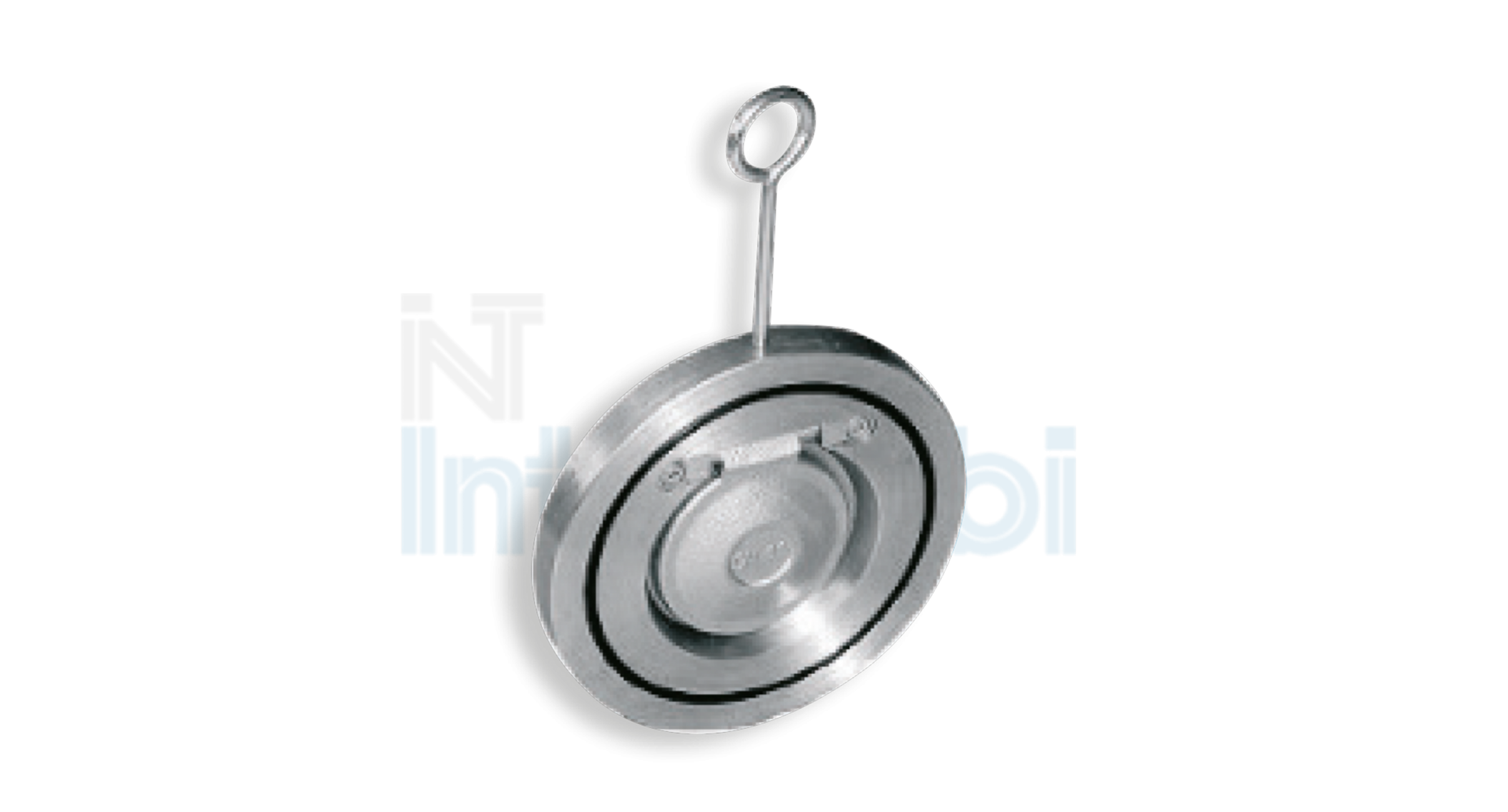Types of check valves
Check valves, as specified in the previous paragraph, play an essential role within the systems in which they are installed. In fact, they block the reflux that can occur inside the pipes, preventing unpleasant or harmful consequences that can cause even considerable damage.
Speaking of check valves, however, means speaking of numerous types, as can be seen in the Intertubi catalogue. The main differences concern the operating mechanism of these valves, even if within each group alternatives can be found depending on the material, the dimensions, the pressures or some geometric characteristics.
In general, the main types are:
- Wafer type double disk check valve: made of CF8M steel, can be installed with vertical, horizontal or inclined flow. The closing mechanism is generated by a double disk which can rotate inside the seat and close the flow in a total or partial way, even if the latter is not always welcome because it generates significant pressure drops;
- Wafer type single disk check valve: made of AISI 316 steel, it can be installed with vertical or horizontal flow. The closing mechanism is generated by a tilting element which only moves with the flow in one direction;
- Wafer disckcheck valve: made of AISI 316 steel, it has similar characteristics to the double flap one but with a disk that blocks the return flow, preventing problems;
- Spring check valves: made of AISI 316 steel, they have a closing mechanism dependent on the action of a spring which imposes closure by preventing the return flow. There may be differences based on the material of the gasket used, which can be PTFE or FKM, with different characteristics of elasticity, resistance (mechanical and thermal) and sealing.
The choice of one type of valve over another depends on the individual applications and the decisions made during the design phase. Getting in touch with the supplier, as Intertubi, allows you to better evaluate the characteristics required in every circumstance, avoiding choices due solely to the habit of the individual designer.
The use of stainless steel represents a necessity to guarantee both the mechanical resistance suitable for withstanding pressures and stresses and to guarantee resistance to corrosion: in fact, the latter is a fundamental property for components used in the water sector.
The presence of a certified supply chain and compliance with current regulations on the subject make Intertubi products excellent from a structural point of view. Despite this, it is essential that there is correct installation followed by preventive maintenance that avoids problems of wear or deterioration over time, causing failure or malfunctions.
Main applications of check valves
In the previous paragraphs, the main types of check or non-return valves have been highlighted, underlining the general operating principle of these components and briefly focusing on the materials, variants and benefits of each.
Typically, non-return or check valves are used in hydraulic systems to prevent flow problems in the opposite direction if pump malfunctions, shutdowns or breakages occur. In fact, during operation there may be various types of problems that compromise the system, or the pump may be turned off for different reasons: in this case the valves must guarantee flow blocking, avoiding emptying or inconvenience to people and buildings sites nearby.
But what are some examples of applications for check valves?
This type of component is remarkably widespread and being able to list all the practical cases in which they can be used is not easy. For brevity, a few examples are listed below:
- swimming pool or tub filling systems: they allow you to avoid emptying if the pump is turned off, allowing the system to function correctly;
- plumbing: they avoid water reflux, minimizing the risk of pollution, back pressure, back-filling and blockages in the system, increasing efficiency and safety;
- hydraulic cylinders: allow you to avoid pressure losses during operation. This can be fundamental when a minimum hydraulic pressure is required for the cylinder to be able to fully perform its function, especially in an industrial context;
- supply systems: by preventing the flow in the opposite direction they reduce the risk of contact with other liquids and/or gases which can cause damage, explosions and various types of problems.
As previously mentioned, the cases reported above do not exhaust all the application possibilities but are intended to be explanatory of the variety of fields of application that can concern these components.
What are the practical advantages of these valves?
The main advantages that can derive from the use of suitable non-return valves are the following:
- efficiency: reduction of waste and losses;
- reduction of downtime of the system: represents a gain both from an economic point of view and from a timing point of view;
- increase in safety: reduction of risks for people, premises and establishments close to the systems in which these valves are used.
All these advantages, however, still require that the product supply chain is certified and that scheduled checks and maintenance be carried out over time. Any neglected step can be a source of failure and lead to loss of function. The choice of material, the design phase, the production phase, assembly and control (as well as decades of experience in the field) are crucial aspects in the working methodology that Intertubi uses.
